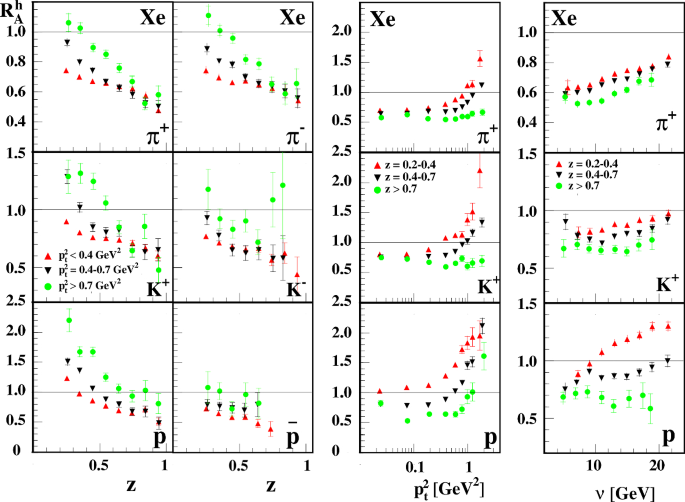Exploring the Potential Role of Diquarks in Hadronization Using Semi-inclusive Deep Inelastic Scattering on Nuclear Targets
IF 1.7
4区 物理与天体物理
Q2 PHYSICS, MULTIDISCIPLINARY
引用次数: 0
Abstract
Hadronization, which is the process by which an energetic colored quark evolves into a color-singlet hadron in Quantum Chromodynamics, can be studied both in small nuclei and large nuclei, and the comparison of the differences between those two systems provides information about the hadronization mechanisms on femtometer distance scales. It can be argued that this process is well understood for light meson production on nuclei, but data from HERMES and CLAS for baryon production present puzzling patterns that are not well described by models. Herein we suggest that this might be due to the presence of diquarks in the protons and neutrons making up these nuclei.

利用核靶上的半包容深度非弹性散射探索双夸克在强子化中的潜在作用
强子化是量子色动力学中高能有色夸克演化为彩色单线态强子的过程,可以在小核和大核中进行研究,比较两种系统之间的差异可以提供飞米距离尺度上强子化机制的信息。可以认为,这个过程对于原子核上的轻介子产生是很容易理解的,但是HERMES和CLAS关于重子产生的数据呈现出令人困惑的模式,这些模式没有被模型很好地描述。在这里,我们认为这可能是由于构成这些原子核的质子和中子中存在重夸克。
本文章由计算机程序翻译,如有差异,请以英文原文为准。
求助全文
约1分钟内获得全文
求助全文
来源期刊

Few-Body Systems
物理-物理:综合
CiteScore
2.90
自引率
18.80%
发文量
64
审稿时长
6-12 weeks
期刊介绍:
The journal Few-Body Systems presents original research work – experimental, theoretical and computational – investigating the behavior of any classical or quantum system consisting of a small number of well-defined constituent structures. The focus is on the research methods, properties, and results characteristic of few-body systems. Examples of few-body systems range from few-quark states, light nuclear and hadronic systems; few-electron atomic systems and small molecules; and specific systems in condensed matter and surface physics (such as quantum dots and highly correlated trapped systems), up to and including large-scale celestial structures.
Systems for which an equivalent one-body description is available or can be designed, and large systems for which specific many-body methods are needed are outside the scope of the journal.
The journal is devoted to the publication of all aspects of few-body systems research and applications. While concentrating on few-body systems well-suited to rigorous solutions, the journal also encourages interdisciplinary contributions that foster common approaches and insights, introduce and benchmark the use of novel tools (e.g. machine learning) and develop relevant applications (e.g. few-body aspects in quantum technologies).
 求助内容:
求助内容: 应助结果提醒方式:
应助结果提醒方式:


